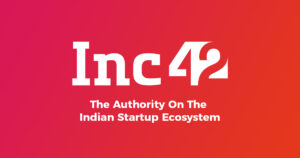When Srikrishnan Ganesan, Vignesh Girishankar, and Deepak Bala were colleagues working for Freshworks, their job involved onboarding several large mid-market customers. In the process, the trio realised it was a struggle to run implementations on spreadsheets, smart sheets, Slack, emails, or even Google Docs.
“I could see that the siloed information across tools meant I had low visibility into what was happening as a leader, and it was hard for even implementation managers to be on top of all the work and documents across their projects. But more importantly, there was no way to codify our playbook. So, the hit or miss experience combined with low visibility made it a chaotic and stressful experience for our customers too,” says Srikrishnan.
This gap led the trio to start in 2020 in Chennai. The startup offers a purpose-built unified workspace for collaborating with customers on onboarding projects. It helps businesses shorten their time-to-value, streamline their software implementation journeys, and provide real-time visibility while elevating the customer experience.
“We started thinking about an out-of-box experience focused on streamlining and managing repeatable customer facing projects like onboarding. Slack+Docs+Asana but with strong templating, workflows, and a new dimension of what’s internal and what’s shared with the customer through a customer portal,” says Srikrishnan.
What does the product do?
He goes on to explain that customer onboarding is a sub-par experience for everyone involved today — with multiple siloed tools, low visibility to stakeholders on the vendor and customer side, hit or miss planning and execution, and poor collaboration across organisations.
Rocketlane aims to change that with a purpose-built and collaborative product that helps companies execute repeatable projects in a consistent and transparent manner. Having started the company right at the beginning of the pandemic, the team ran into multiple delays around even the most straightforward of things like incorporating the company.
Nevertheless, given how the world has gone remote and hybrid, the need for better collaboration tools has only increased.
“We’ve focused on building out features that help teams create a transparent and consistent experience for every customer. We’ve also built features like CSAT and out-of-the-box dashboards that help leaders stay on top of project execution and customer sentiment around it,” adds Srikrishnan.
A remote working challenge Rocketlane solves is helping teams scale faster with its templating capabilities across projects and documents helping new team members execute the same playbooks as their senior colleagues, but with minimal training. This is possible as all the content around help and best practices are codified into the templates.
“As we’ve grown rapidly, we’ve delivered on several key capabilities for customers — around integration abilities with JIRA and Salesforce, time tracking, dashboards and reports, chat, and
many more impactful enhancements. We’re also now SOC2 Type 2 compliant,” says Srikrishnan.
Rocketlane has evolved to handle scale efficiently as well. Srikrishnan adds they have multiple customers with 300+ users on their platform, running over 500 parallel projects.
Challenges and working through them
“We’re a modern solution that has also managed to mature fairly quickly, so we’re able to deliver value from seed startups, all the way to SaaS unicorns,” he says.
“We also had the challenge of bringing together a bunch of individuals who had never met in person or worked together to work on a product from scratch – which meant needing to align all of them behind a common mission, establish a way of working that we could all follow, and being intentional about creating avenues for the team to get comfortable with each other. All of that over Zoom and Slack,” says Srikrishnan.
He adds the team used the initial pandemic period to focus on the “build” phase – they created a pretty robust and complete product offering, and also built a 1,000-member strong and engaged community of professionals in this space of implementation, onboarding and success that they are learning from.
Building the internal process
Using video extensively to align team members around the problem and the solution, Srikrishnan says they recorded every problem discovery conversation, every walkthrough of click-through prototypes and customer interviews, so the entire team are on the same page.
“We also used video for internal rapport building. We started a weekly “All Faces” meeting – all hands with our videos on. We sometimes do company updates in these sessions, but often it just is about a casual catch up for the team to get to know each other, have some fun together, and ask questions about anything they are curious about. Every new team member does an intro video session — where they are asked questions like what is weird about them, what is their superpower at work, etc — and we all learn something about the person. We have a recording of all of these videos too, which helps as new team members get to learn about their colleagues here,” says Srikrishnan.
He adds they also put in specific practices like a Demo Day every Friday, which compels the team to get to production-ready and polished code each week, and also work closely with product and design to shape the experience ahead of the demo. This has been critical to prevent developers from working in their own silos for weeks.
The team has also been actively sharing about their journey, learnings, and initiatives on online media, and even built a slack community around customer onboarding — which now has 1,000+ people globally.
“We were also very picky about our initial hires. All of that has helped us showcase ourselves and our work as being world-class, and has helped us continue to attract top talent for our roles, and hence scale with a strong team. We are also building a GTM team in the US,” says Srikrishnan.
The Rocketlane team now stands at 37 members. The team launched the first product in June 2021, and the founders claim they were at the top of Product Hunt — a website to discover and share new products — on the day. Srikrishnan adds they had very strong initial traction and growth.
Customers and market
“While we don’t reveal our revenue numbers, you can see that we’re a leader in G2 for our category already, which takes into account product satisfaction, and market presence. We’re on a high momentum journey with customers globally including the likes of Linksquares, ParcelLabs, Leadsquared, Yellow.ai, Chargebee, Delhivery, among others,” claims Srikrishnan.
According to him, Rocketlane is purpose-built for running customer-facing projects like onboarding and implementation projects.
“To be specific, Rocketlane is the only product that has combined project, document collaboration and conversations into one tightly knit experience, along with native time tracking, resource management etc for mature implementation and professional services teams,” adds Srikrishnan.
There are companies like Adobe, Salesforce, and Capillary to name a few in the space. Rocketlane is a SaaS product, which has very typical economics in terms of CAC, ACVs, LTV, etc.
“In an early stage like ours, we typically look to break even on every customer acquired in six to 12 months. If you have an annual contract value (ACV) of $6,000, and negligible early churn, you don’t want to spend more than $3,000 to acquire a customer. Once you establish the clear lifetime value (LTV), you can go for an LTV to “customer acquisition cost” (CAC) ratio of around 3:1, and hence adjust marketing spends and goals accordingly. SaaS companies have high gross margins of usually around 80 percent when the business scales – since the cost of goods sold (COGs) is only the cloud infrastructure, any software licenses involved, maintenance/monitoring costs, and customer service,” says Srikrishnan.
Funding and future
The startup recently raised $18 million in Series A funding. The round was led by previous Asana investor, 8VC, with participation from Nexus Venture Partners, Matrix Partners India, and prominent angel investor, Gokul Rajaram.
Srikrishnan explains as they built a full-featured product that is a unification play on existing horizontal products, they did not have an MVP.
“We’ve built a product with significant breadth and depth, and it took us nine months to get to a beautiful product that we could put in front of customers. I’d estimate the cost of running a team to build a robust and complete SaaS offering these days would be $800,000 to $1 million when you have a product and engineering team in India,” remarks Srikrishnan.
Rocketlane is adding key capabilities that allow better collaboration with partners involved in customer projects, and adding deeper resource management capabilities in the coming quarter.
“We are investing in our product to expand the scope of Rocketlane from customer onboarding projects to include ongoing customer project delivery, and from vendor-customer projects to multi-party projects that include implementation partners and other third parties involved in project execution. We will use this for scaling our business growth and team — towards accelerating our marketing efforts and expanding our GTM team globally. We will also do our bit to educate the market about the category and function,” explains Srikrishnan.










